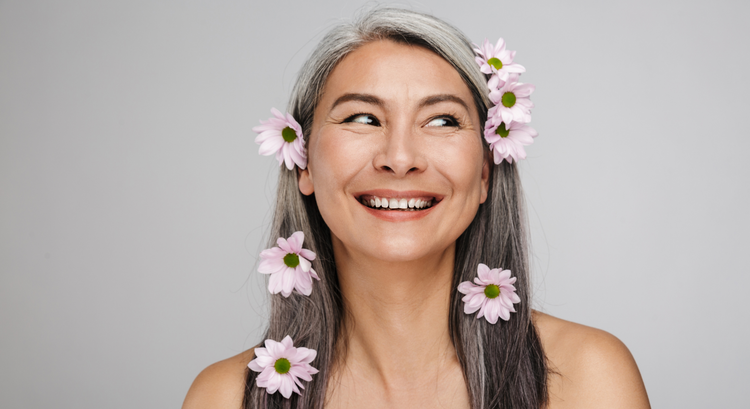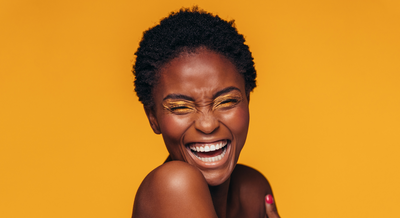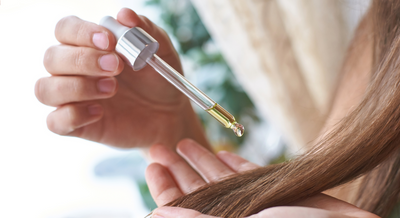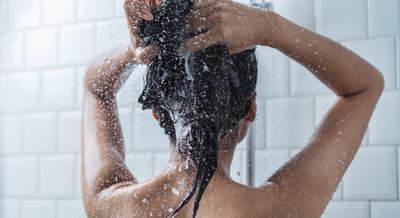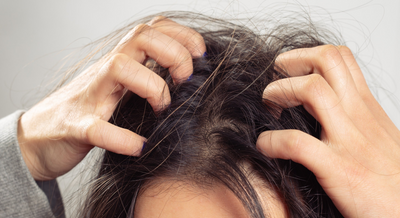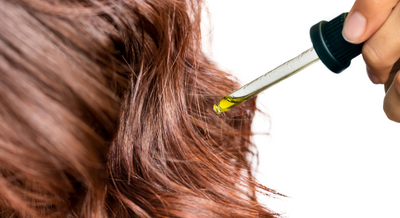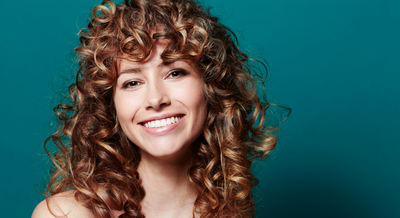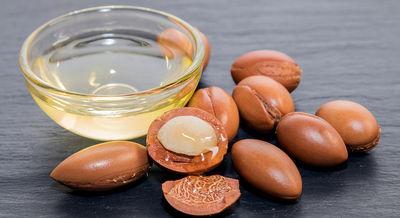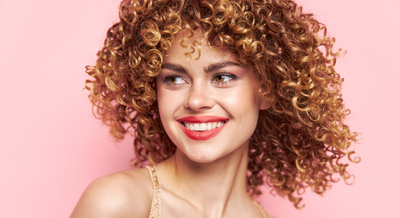Silver hair is known as a symbol of maturity and elegance but, for a person who is currently in their 20s and experiencing premature gray hair, it can be an agonizing situation.
We as a people typically despise change, especially the changes that come with old age. Gray hair can be a nightmare for both men and women. Witnessing your first gray hair can feel like your whole world is undesirably changing.
There are not a lot of options for you if you are in your 30s or 40s. However, there is good news for younger people who have just started to experience the signs and symptoms as they may be able to slow down the hair graying process.
What is premature hair graying?

Pigment-producing cells known as melanocytes are responsible for giving your hair its natural color. It also provides keratin, which is the fundamental protein of your hair.
As you age, these cells age along with you. Over time the production of pigments slows down, and the lightening of your hair begins.
Consequently, you may end up with significant white strands on your head.
For an average human, this process of graying does not start until you reach middle age.
However, the age at which the white strands show up can vary with different ethnic backgrounds.
For instance, Caucasian people may have significant bleached hair in their 30s. For African American people, the silver strands do not typically take over until they reach 40.
The aforementioned average estimation represents the natural process of hair graying. On the other hand, for some people, hair starts to turn gray in the 20s. This condition is called premature hair graying.
The cause which triggers this premature discoloration varies from person to person. It can be triggered by autoimmune disorders, chemicals, toxins, oxidative stress, hormonal imbalance, chronic stress, and genetics.
What things should you avoid after witnessing gray strands?
Noticing your first gray strand can be surprising as well as depressing. In that state of hysteria, we usually lose our cool and start doing some things that may actually worsen the situation.
Here are some tips on how to handle the gray hair.
1) Uprooting gray hair won’t help
The first thought that ponders in your head when you see gray hair is probably plucking it out right away. Let us break the bubble for you —It neither stops other hair from turning gray, nor does it normalize the color for the next strand, which is going to grow up from the same hair follicle.
The only thing that you will achieve is alopecia. Plucking enough strands over and over again will cause your hair follicles to get weaker.
Consequently, you may even end up with visible patches on your scalp that are devoid of hair. This condition is known as trichotillomania, a disorder in which the person plucks his/her own hair until baldness.
We suggest you avoid this fruitless act of plucking and seek the actual cause behind the gray hairs.
2) Do not ignore your silver strands
Some people may not pay much attention to it, thinking that gray hairs are purely genetic. Sometimes they are caused by genes from your parents. However, there is also a probability that some kind of deficiency or medical condition has triggered it.
Conditions like Vitamin B12 deficiency and thyroid gland malfunction can wreak havoc on your whole body. Vitamins regulate a good deal of bodily functions and provide necessary nourishment to hair, skin, and other parts of the body.
The thyroid gland is responsible for regulating normal working hormones. You must seek a doctor to diagnose the cause behind the sudden hair bleaching. At an early stage, the probability of the recovery is considerably higher.
Deficiency of iron can also trigger hair loss and discoloration. The amount of iron in your body ensures the normal productions of melanin, healthy growth of hair, and properly working hair follicles.
3) Avoid products containing ammonia
The panic caused by your hair turning gray can compel you to make decisions that might prove regretful in the end. Before making a rushed decision, it is always wise to investigate the possibilities of alternatives and side effects of every product that you are going to choose on your hair.
Hair products that have ammonia in them may prove harmful and can trigger a chain reaction of hair loss.
Always go for products that are devoid of ammonia and have natural or organic ingredients. If you are going for a hair coloring option, it is best to consult it with your stylists first. This way, you will be able to make a fully informed decision by knowing all the possibilities of style and coloring options.
4) Do not keep using the same hair products
There is some evidence that hair discoloration has triggered by overuse of certain shampoos and conditioners. They may not directly affect the pigments, but they can surely affect melanin production indirectly.
Overuse of shampoos or other products can cause severe dryness, and harsh chemicals can weaken hair follicles over time.
When weakened, hair follicles fail to maintain the normal functions and as a result, they can reduce the production of hair pigments.
After finding your first gray strand, it is wise to avoid the same hair products to find out the real reason behind the bleaching.
5) Do not let stress take over

Anxiety and stress are monsters that slowly eat you up inside out. Many diseases, bodily abnormalities, and complications are related to stress and worsened by it. Therefore, there is a strong connection between stress and hair discoloration.
You may have even noticed that people who work more than they can handle or have gone through trauma have abundant gray hairs. This is because stress attacks the melanocytes, which are responsible for producing and distributing the pigments of your hair.
Out of all the causes, stress is relatively harder to deal with. You may have to seek out a professional therapist to root out the cause of your silver head before it is too late.
6) Avoid over washing
Your scalp produces sebum, which is natural lubrication that helps counteract dryness.
Moreover, this lubrication nourishes the scalp by maintaining the good health of hair follicles. When you over-wash your head, you are basically stripping away the essential oils that are vital for keeping the scalp and hair healthy.
However, a large quantity of sebum is fraught with hazards. It can trigger one of the worst types of dandruff that is very difficult to get rid of.
So, washing your head twice or thrice a week should be a part of your hair care routine. The only thing you need to watch out for is over washing.
7) Choose products that are suitable for your scalp and hair
It goes without saying that you have to choose the rights products that go with both your skin and hair. Some people are allergic to certain products or compounds in shampoos.
So, it is best to test the product in an area of your head first to see whether it causes irritation or discomfort or not.
Playing it safe is the best defense against allergic reactions. Selecting a suitable product may require some extra effort, but if you are wanting to prevent premature gray hair, then it may be worth it to take some extra steps to ensure your scalp and hair health.
We suggest you always take your natural hair type, texture, moisture conditions into consideration before making the final decision on a shampoo.
8) Do not just cover your head all the time
In order to save yourself from the embarrassment, you may be willing to cover your head most of the time. However, this could open a pandora’s box of new problems for you.
Covering the head all the time may give rise to an environment that can become a home to scalp fungus and bacteria. It can also trigger an abnormal amount of natural hair oils. All of these conditions will leave one big problem — dandruff.
9) Refrain from smoking
Lung cancer, oral cancer, asthma, teeth weakening, and many more, these are just the health hazards of cigarettes that we know about. You’d be surprised to know that there are some other equally injurious side effects as well. So, we are going to add one more to the colossal pile of hazards, and that is hair graying. It might be news to you, but there is a strong link between gray hairs and smoking.
According to some researchers, people who smoke suffer from premature gray hairs more than people who do not. It is probably related to the fact that the toxins in cigarettes can weaken the hair follicles, causing the reduction of melanin production.
Other bad habits like excessive alcohol consumption may also result in gray hairs.
10) Do not compromise on your sleep
Getting adequate rest is crucial for being ready for another day. But often due to workload, illness, and wrong lifestyle choices, we neglect the importance of an eight-hour sleep.
There is a reason that every single doctor recommends sufficient sleeping time. It maintains your overall physical and mental health.
Sleep deprivation can lead to stressful conditions that can trigger hair loss and hair pigment loss. Stress hormones attack hair follicles, and as a result, they can become weakened.
Weakened hair follicles are unable to maintain the normal production of melanin cells — causing gray hair.
11) Avoid substandard hair dyes
Are you among those people who prefer to save their money by coloring their own hair? If yes, then your head is more likely to get silver strands.
The dye will conceal the gray hair look no matter the quality, but what happens when the artificial color wears off? You may notice that the number of gray hairs has significantly increased.
The harsh chemicals present inside less expensive, home hair dyes can speed up the hair graying process by damaging the health of hair follicles.
We strongly suggest that you buy products from good and reliable sources.
12) Avoid overexposure of sun radiations
Undeniably, sunlight is crucial in getting vitamins. When your bare skin is exposed to the sun, it is naturally constructed in a way that it produces vitamin D as long as it is exposed.
The excess amount of sun radiation can leave your strands damaged instead of nourished. The rays carry ultra-violet parts of the electromagnetic spectrum that react with your hair and make your strands brittle.
Overexposure of these radiations can permanently kill the strands by penetrating inside the core of the cells. When they reach all the way to the roots, they disrupt the normal functions and will eventually affect the production of melanin.
13) Do not panic if you experience gray hair in your 30s
With age, our bodies weaken and transform. Getting gray hair is a sign that we are becoming older. Over time, the melanin cells stop working properly, and reduced production of hair pigments ultimately causes silver hair. You do not need to panic if it occurs in or after your 30s. But it can be alarming for people who experience the premature case of graying hair in their 20s.
14) Stay away from products that have hydrogen peroxide
Our hair follicles naturally produce a tiny amount of hydrogen peroxide, which can accumulate, causing the bleaching of hair strands. As long as this compound is present on the opening of roots, then the bleaching will continue.
Certain hair products also have a small amount of hydrogen peroxide in them. If you are already suffering from graying hair, then putting on a hair product with this compound will not be such a good idea.
Moreover, other hygienic products such as toothpaste also contain hydrogen peroxide. Therefore, prior to purchasing, examine the ingredients to avoid this compound.
15) Do not ignore vitamins in your diet

Vitamins play a vital role in maintaining the normal functions of our body. Inadequacy of vitamins can severely mess up your health. Especially vitamin B12, which is directly responsible for giving your hair its natural color.
The deficiency of vitamin B12 upsets the production of hair pigments. When your hair is not getting enough natural pigments, then white strands will appear.

